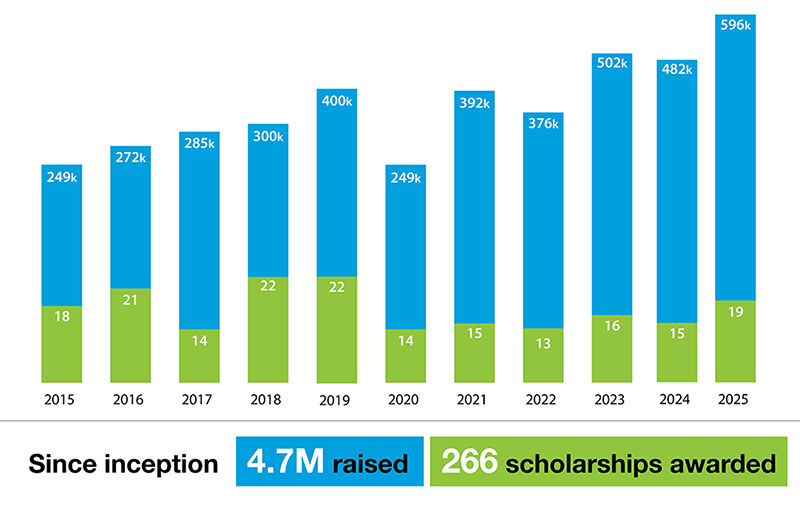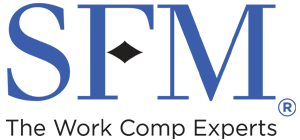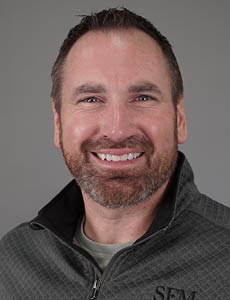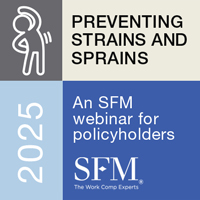The SFM Foundation recently awarded this year’s round of college scholarships, helping 19 new students totaling $596,000 in funding.
“It’s incredible to see how much our organization has grown over the years,” said Linda Williams, SFM Risk and Compliance Technical Specialist, who serves as the foundation’s president. “We are so grateful to all our donors and the volunteers who make our efforts possible.”
 The SFM Foundation is a nonprofit that helps families affected by workplace injuries by providing scholarships to children of workers disabled or killed in work-related accidents.
The SFM Foundation is a nonprofit that helps families affected by workplace injuries by providing scholarships to children of workers disabled or killed in work-related accidents.
Compared to 2024, the foundation awarded four more scholarships and more than $100,000 in additional funding this year. The SFM Foundation has now awarded 266 scholarships totaling $4.7 million since its inception.
“We have seen a steady uptick in the number of applicants for our scholarship, so being able to award more students and provide more funding this year is amazing,” said Deb Zorn, SFM VP of Regional Business and the foundation’s scholarship director. “It’s so rewarding to see these young people follow their dreams with the support of the foundation community.”
‘Gold’ status for SFM Foundation
The SFM Foundation recently reached Gold Level status from Kids’ Chance of America, recognizing top-tier excellence in nonprofit operations. One of the final steps to reach that status was creating a whistleblower policy.
“One of the other criteria necessary for Gold Level of Excellence is for the State Organization to consider having a paid executive director,” Williams said. “The SFM Foundation is fortunate to rely solely on volunteers to handle its operations, and no paid staff is needed, ultimately qualifying us for the Gold Level.”
In Iowa and Minnesota, the SFM Foundation is an affiliate of Kids’ Chance of America.
“It’s an honor to reach the Gold Level from Kids’ Chance,” said Lindsay Henningsgaard, Marketing Underwriter Specialist and the foundation’s executive director. “The new designation doesn’t change our mission of helping students who have been impacted by workplace injuries, but it is nice Kids’ Chance recognized the strength of our organization.”
June golf fundraiser
The SFM Foundation’s golf fundraiser in Minnesota is full. However, people can still attend lunch, dinner or sponsor. Note, though, that sponsors will no longer be listed in print materials (deadline was May 1).
The event is set for Monday, June 9, at Prestwick Golf Club in Woodbury. Find more information on the event page . The Iowa golf fundraiser was held May 19.
“We’re always so thankful of the support of our agency partners, clients and others who contribute to our mission,” Williams said. “These golf events are not only a way to raise scholarship funds, but they also allow those involved to connect and build a community.”
About the SFM Foundation
The SFM Foundation was created in 2008 by SFM Companies, a regional workers’ compensation insurance group headquartered in Bloomington, Minn. The nonprofit is dedicated to easing the burdens on families affected by workplace accidents. Since its inception, the foundation has awarded 266 scholarships totaling $4.7 million. For more information, visit sfmfoundation.com .
The SFM Foundation is an affiliate of Kids’ Chance of America in Iowa and Minnesota.
View more news about SFM

 The SFM Foundation is a nonprofit that helps families affected by workplace injuries by providing scholarships to children of workers disabled or killed in work-related accidents.
The SFM Foundation is a nonprofit that helps families affected by workplace injuries by providing scholarships to children of workers disabled or killed in work-related accidents.
